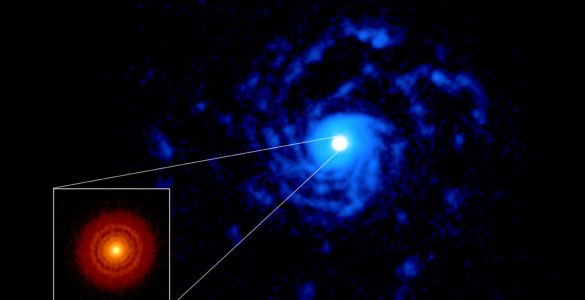Latest NRAO News
News is managed by NRAO News & Public Information. Questions about News? Have a story to share? Want to interview a scientist or create new media about our telescopes?

Episode 6 of The Baseline Series explores how galaxies form ordered rotating disks in the early Universe.

The process of returning ALMA to operational status has begun by powering up the first few antennas for the first time since the COVID-19 shutdown in March of 2021.

Astronomers using the Atacama Large Millimeter/submillimeter Array (ALMA), along with other telescopes, have discovered the most distant quasar yet found. The bright quasar, powered by a supermassive black hole at the core of a galaxy, is seen as it was only 670 million years after the Big Bang, and is providing valuable clues about how such huge black holes and their host galaxies formed in the early Universe.

ALMA telescope conducts largest survey yet of distant galaxies in the early universe

New radio images from ALMA show for the first time the direct effect of volcanic activity on the atmosphere of Jupiter’s moon Io.

Using ALMA, two teams of astronomers have for the first time discovered a planet-forming disk with misaligned rings around a triple star system, called GW Orionis.

Planet-forming environments can be much more complex and chaotic than previously expected. This is evidenced by a new image of the star RU Lup, made with ALMA.

Based on ALMA observations and a theoretical follow-up study, scientists suggest that a neutron star might be hiding deep inside the remains of Supernova 1987A.

Astronomers created a stunning mosaic of ALMA and Hubble images, showing celestial fireworks in star cluster G286.21+0.17.

An international team of astronomers has created the most detailed map yet of the atmosphere of the red supergiant star Antares.





